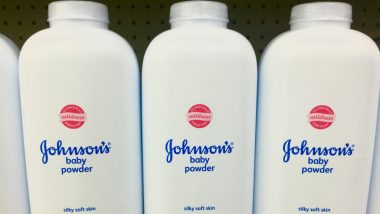When it comes to baby products, no other company has enjoyed the respect and trust of the consumers like Johnson & Johnson has. In India, J&J products are the go-to products for newborns and are bought by parents without even batting an eyelid. But recently, the company has been shelling out billions of dollars in damages to complainants who claim that J&J’s baby powder causes ovarian cancer. In recent news, the company has been ordered to pay $4.9 billion to 22 complainants who allege that regular use of J&J's baby powder has caused ovarian cancer.
Baby products are generally trusted widely by consumers, who naively believe that corporations won’t risk the health of infants for a profit. It’s this naiveté that makes adults also use baby products, thinking it could be milder than regular products. But scientists have sounded the alarm bells since the 1960s, warning consumers against the hidden dangers of talc.
The company claims that 70 percent of its baby powder has been bought by adults who use it for cosmetic and hygiene purposes. Dusting the powder in the genital and perineal area is common practice. In 2015, J&J had to pay the family of Jacqueline Fox, a woman who died of ovarian cancer, $72 million in damages. The family claimed that Fox had been using baby powder on her underwear since she was a teenager for years. Since then, the company has been sued by over 1000 women who claim that the powder caused ovarian cancer.
The Talc and Asbestos Connection
The primary ingredient in baby powders and talcum powders is talc, the softest mineral known to mankind. According to the US Food and Drug Administration (FDA), it is a naturally-occurring mineral which contains magnesium, silicon, oxygen and hydrogen. Talc is used widely Apart from cosmetics, talc is also used in food products such as rice, chewing gum and in tablets.
FDA mentions that while talc is a safe material, it is often contaminated with asbestos, another naturally-occurring silicate mineral with a different crystal structure. The two minerals, talc and asbestos, are found in close in the earth, which causes the two minerals to mix with each other. However, unlike talc, asbestos is a carcinogen. Since the 1960s, there are various studies that link talcum powders to ovarian cancer, but they have not been able to demonstrate the association conclusively. Unless, one sources talc from a safe mining site where there is no chance of asbestos contamination, one can never be sure of the quality of the powder.
Is Baby Powder Safe?
Although cosmetic companies market their products as being completely safe, there are many hidden risks of using talc. Here’s a list of dangers associated with talcum and baby powder use.
Ovarian Cancer
The biggest health controversy surrounding the use of talcum powder is ovarian cancer. A total of 16 case-control studies found an association between perineal talc dusting and ovarian cancer. Talcum powder, especially baby powder, is applied to the genital area from where it can travel into the uterus, ovaries and fallopian tubes through the vaginal opening. A 2016 study showed a 33 percent increase in ovarian cancer risk due to powder use.
Lung Cancer
Lung cancer is seen commonly in talc miners, fuelling speculations that talcum powder can increase lung cancer risk. Although a few studies do point towards the connection, the cancer could be caused by exposure to asbestos in the mine.
Pulmonary Talcosis
A rare disease of the lungs called pulmonary talcosis could result from the constant use of talcum powder. In a case study, a 52-year-old woman was admitted to the hospital with a 6-month history of breathlessness. She also experienced constant dry cough and weight loss of about 20 pounds while she was ill. Her lung examination showed that there was fibrosis in her bronchial walls, pointing towards pulmonary talcosis. She revealed that she had been using baby powder regularly twice a day after a bath. She also applied the powder to the bed sheets at night.
Respiratory Problems in Babies
If you are wondering whether the baby powder is safe for your little one, beware. The American Academy of Pediatrics reports that infants and toddlers can experience breathing problems and lung damage if they inhale particles of baby powder. If the child is at risk of lung diseases, even small amounts of the powder can pose a threat. Premature babies, babies with congenital heart diseases and infants with respiratory problems are at high risk.
Talcum powder is an indispensable part of our cosmetic cabinet and is used widely all over the country, from the rural areas and the cities. But it’s hard to ignore the health hazards associated with it. To make matters worse, talc is present in a wide variety of items of daily use, including in chewing gums, deodorants, toothpaste, etc. Safer substitutes like baking powder or cornstarch can be used, which are gentler on the skin and are completely organic.
(References: Perineal Talc Use and Ovarian Cancer: A Critical Review; The Association Between Talc Use and Ovarian Cancer; Risk Assessment of Baby Powder Exposure through Inhalation ;Talc induced pulmonary granulomatosis)
(The above story first appeared on LatestLY on Jul 13, 2018 06:25 PM IST. For more news and updates on politics, world, sports, entertainment and lifestyle, log on to our website latestly.com).












 Quickly
Quickly











